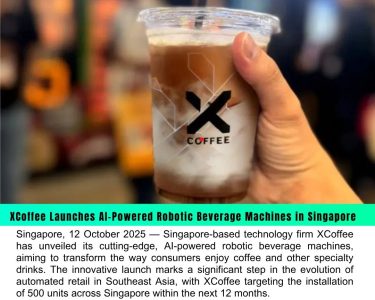China’s Chip Industry Faces Significant Gap Behind TSMC, Report Reveals
China’s semiconductor industry, particularly its top chipmaker, Semiconductor Manufacturing International Corporation (SMIC), is facing significant challenges in catching up with the global leader in chip production, Taiwan Semiconductor Manufacturing Company (TSMC). According to a recent analysis, SMIC lags up to six years behind TSMC in terms of technology and efficiency, with a gap as wide as eight times in chip production output. This disparity poses serious obstacles to China’s ambitions of becoming self-sufficient in semiconductor manufacturing.
The Gap in Chip Production
TSMC, the world’s largest contract chipmaker, has long been at the forefront of semiconductor innovation, producing cutting-edge chips using the latest manufacturing processes. The company’s ability to produce chips with smaller nodes, such as 5-nanometer and 3-nanometer processes, has kept it ahead of its competitors. TSMC’s advanced processes allow it to manufacture chips that are faster, more efficient, and more energy-saving, a critical factor in industries ranging from consumer electronics to automotive and artificial intelligence.
In contrast, SMIC, despite being China’s largest semiconductor manufacturer, is far behind in technological advancements. SMIC’s most advanced process is at the 14-nanometer node, while TSMC has already scaled down to 5-nanometer and is preparing to move to 3-nanometer production. This technological gap severely limits China’s ability to produce high-performance chips, which are increasingly in demand for everything from smartphones and computers to electric vehicles and AI systems.
The discrepancy in production efficiency is also significant. The report highlights that SMIC’s production capacity is up to eight times less efficient than TSMC’s. This means that while TSMC can produce more chips per unit of time, SMIC’s output remains constrained, impacting its ability to meet the growing demands of the global semiconductor market. Additionally, SMIC struggles to match the yield rates and precision of TSMC’s chips, which makes the production of high-performance semiconductors far more expensive and less viable for large-scale manufacturing.
Challenges in Achieving Self-Sufficiency
China has long sought to reduce its reliance on foreign-made semiconductors, particularly in the face of geopolitical tensions and trade restrictions. The U.S. has imposed sanctions on Chinese tech companies like Huawei, restricting their access to advanced semiconductor technologies. This has spurred China’s push for technological independence, with the government investing heavily in its semiconductor industry.
However, the technological gap between SMIC and TSMC is a significant hurdle to achieving self-sufficiency. Despite massive investments and strategic efforts, China’s semiconductor industry lacks access to the most advanced production technologies. The export restrictions imposed by the U.S. on critical equipment and materials needed for advanced chip manufacturing have made it even harder for SMIC to bridge the gap with TSMC.
Moreover, the reliance on foreign materials, such as extreme ultraviolet (EUV) lithography machines, which are essential for manufacturing chips at smaller nodes, has further hampered China’s efforts. TSMC and other leading chipmakers have access to these critical tools, while SMIC has been unable to obtain them due to international trade restrictions.
Moving Forward: Challenges and Opportunities
China’s push to catch up with TSMC is unlikely to be an easy or quick process. While the government is investing heavily in its semiconductor industry and making progress in research and development, the gap in chip production efficiency and technology remains a significant barrier.
For SMIC to close the gap, it must overcome technological hurdles, including improving its manufacturing processes, increasing its production efficiency, and gaining access to advanced equipment. Collaboration with international partners, a relaxation of export restrictions, and long-term investments in research and development could help China make gradual progress. However, the road to technological parity with TSMC is likely to take years, and the gap may continue to affect China’s semiconductor self-sufficiency ambitions in the short term.
Conclusion
China’s semiconductor industry, led by SMIC, remains far behind TSMC in terms of both technology and production efficiency. While China has made strides in developing its semiconductor capabilities, the gap in advanced chip production and manufacturing efficiency is substantial. For China to become a leader in semiconductor production and reduce its reliance on foreign technology, it will need to address these challenges through strategic investments, technological advancements, and overcoming geopolitical constraints.





